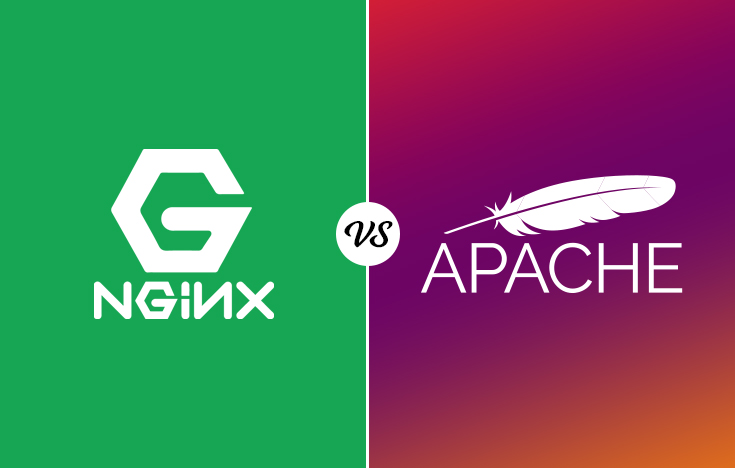In the digital landscape, the Linux operating system stands as the undisputed champion of web hosting, powering a vast majority of the world’s servers. Its stability, security, and open-source nature make it the go-to choice for developers, system administrators, and DevOps engineers alike. At the heart of any Linux web hosting environment is the web server software, the engine that receives requests from browsers and serves up web content. The two most dominant players in this space are the venerable Apache HTTP Server and the modern, high-performance Nginx.
This comprehensive guide will walk you through the entire lifecycle of managing a Linux web server. We will delve into the core concepts, from choosing and installing your software to configuring virtual hosts for multiple websites. We’ll then explore critical security practices, including setting up firewalls and enabling HTTPS. Finally, we’ll touch upon advanced topics like performance monitoring and automation. Whether you’re working with a popular Linux distribution like Ubuntu, Debian, CentOS, or Fedora, this tutorial will provide you with the practical knowledge and actionable code examples needed to build and maintain a robust, secure, and efficient Linux web server.
Choosing and Installing Your Web Server
The first crucial decision in your journey is selecting the right web server software for your needs. While there are several options available, the choice almost always comes down to Apache or Nginx. Understanding their fundamental differences is key to making an informed decision.
Apache vs. Nginx: A Quick Comparison
Apache HTTP Server (httpd): First released in 1995, Apache is a titan of the web. Its greatest strength lies in its flexibility and power, driven by a rich ecosystem of modules that can extend its functionality in countless ways. Apache’s traditional process-driven architecture creates a new process or thread for each connection, which is robust and easy to configure but can consume significant memory under heavy load.
- Pros: Extremely flexible, massive module library, powerful
.htaccessfile support for per-directory configuration, and extensive documentation. - Cons: Higher memory usage under high concurrency, can be slower at serving static files compared to Nginx.
Nginx (pronounced “engine-x”): Created to solve the C10k problem (handling ten thousand concurrent connections), Nginx uses a modern, asynchronous, event-driven architecture. It handles requests in a single thread, making it incredibly lightweight and efficient with memory. This makes it excel at serving static content and acting as a reverse proxy or load balancer.
- Pros: Excellent performance, low memory footprint, superb for static content, and powerful as a reverse proxy and load balancer.
- Cons: Fewer modules than Apache (though the core set is very powerful), and core configuration can be less intuitive for beginners.
A common and powerful pattern in modern Linux administration is to use both: Nginx as a reverse proxy to handle incoming requests and serve static files, forwarding dynamic requests to Apache, which then processes them.
Installation on Popular Linux Distributions
Installation is straightforward using the default package managers of your chosen Linux distribution. Always start by updating your package lists to ensure you get the latest stable versions.
On Debian-based systems (Ubuntu, Debian):
Use the apt package manager. This Ubuntu tutorial snippet shows how to install Nginx.
# Update package lists
sudo apt update
# Install Nginx
sudo apt install nginx -y
# To install Apache instead
# sudo apt install apache2 -yOn RHEL-based systems (CentOS, Fedora, AlmaLinux, Rocky Linux):
Use the dnf package manager (or yum on older CentOS/RHEL versions). This example is for Red Hat Linux and its derivatives.
# Update package lists
sudo dnf update -y
# Install Nginx
sudo dnf install nginx -y
# To install Apache instead (package is named httpd)
# sudo dnf install httpd -yAfter installation, you can use the Linux terminal and the systemctl command to ensure the service is running: sudo systemctl status nginx (or apache2/httpd).
Core Configuration and Hosting Your First Site
With your web server installed, the next step is to configure it to serve your website. Both Apache and Nginx use the concept of “virtual hosts” (called “server blocks” in Nginx) to manage multiple websites on a single Linux server.
Understanding Configuration Files
It’s vital to know where to find the configuration files. Modifying these files is a core task in Linux system administration.

- Apache (Debian/Ubuntu): Main configuration is in
/etc/apache2/apache2.conf. Virtual hosts are defined in.conffiles within/etc/apache2/sites-available/and enabled by creating a symbolic link to them in/etc/apache2/sites-enabled/. - Nginx (All distributions): Main configuration is in
/etc/nginx/nginx.conf. Virtual hosts (server blocks) are typically defined in.conffiles within/etc/nginx/conf.d/or, on Debian-based systems, in/etc/nginx/sites-available/and enabled via symlinks in/etc/nginx/sites-enabled/.
Creating an Nginx Server Block
Let’s walk through a practical example of setting up a site yourdomain.com on Nginx. This process involves creating a directory for the site’s files, setting file permissions, and creating a server block configuration file.
1. Create the Document Root: This is where your website’s HTML files will live.
# Create the directory for your domain
sudo mkdir -p /var/www/yourdomain.com/html
# Set ownership to the web server user (www-data on Ubuntu)
sudo chown -R www-data:www-data /var/www/yourdomain.com/html
# Ensure correct read permissions for the Linux file system
sudo chmod -R 755 /var/www/yourdomain.com2. Create a Sample Page: Create a simple index.html file for testing.
sudo vim /var/www/yourdomain.com/html/index.html
Add some basic HTML content, like <h1>Welcome to yourdomain.com!</h1>.
3. Create the Server Block File: Use a text editor like Vim to create a new configuration file.
sudo vim /etc/nginx/sites-available/yourdomain.com
Add the following configuration. This tells Nginx how to handle requests for your domain.
server {
listen 80;
listen [::]:80;
server_name yourdomain.com www.yourdomain.com;
root /var/www/yourdomain.com/html;
index index.html index.htm;
location / {
try_files $uri $uri/ =404;
}
}4. Enable the Server Block: Create a symbolic link to the sites-enabled directory.
sudo ln -s /etc/nginx/sites-available/yourdomain.com /etc/nginx/sites-enabled/
5. Test and Reload Nginx: Always test your configuration for syntax errors before applying it.
sudo nginx -t
If the test is successful, reload Nginx to apply the changes: sudo systemctl reload nginx.
Securing Your Linux Web Server
Running a public-facing web server without proper security measures is a recipe for disaster. Linux security is a deep topic, but here are the essential first steps for hardening your server.




Configuring the Linux Firewall
A firewall is your first line of defense. It controls incoming and outgoing network traffic. Most modern Linux distributions come with tools to manage the underlying iptables rules easily.
- UFW (Uncomplicated Firewall): Common on Ubuntu and other Debian-based systems. It’s designed to be user-friendly.
- firewalld: The default on RHEL-based systems like Fedora and CentOS. It uses zones to manage traffic rules.
You must allow traffic on port 80 (HTTP) and port 443 (HTTPS). Here’s how to do it with firewalld:
# Start and enable the firewalld service
sudo systemctl start firewalld
sudo systemctl enable firewalld
# Allow HTTP and HTTPS traffic permanently
sudo firewall-cmd --permanent --zone=public --add-service=http
sudo firewall-cmd --permanent --zone=public --add-service=https
# Reload the firewall to apply the changes
sudo firewall-cmd --reloadImplementing HTTPS with Let’s Encrypt
In today’s web, HTTPS is non-negotiable. It encrypts the connection between your server and your users, protecting their data. Let’s Encrypt provides free, automated SSL/TLS certificates. The easiest way to use it is with the certbot client.
1. Install Certbot: The installation method varies by distribution. On Ubuntu, you would install the Nginx plugin:
sudo apt install certbot python3-certbot-nginx
2. Obtain and Install the Certificate: Run the Certbot client, specifying your domain. It will automatically detect your Nginx configuration, obtain a certificate, and configure Nginx to use it.
sudo certbot --nginx -d yourdomain.com -d www.yourdomain.com
Certbot will also set up a cron job or systemd timer to automatically renew the certificate before it expires, making maintenance effortless.
Advanced Hardening: SELinux and Security Headers
For enhanced security, consider these advanced measures:
- SELinux (Security-Enhanced Linux): A mandatory access control (MAC) system built into the Linux kernel, standard on Red Hat Linux and its derivatives. It enforces strict policies on what processes and users can do. While it has a steep learning curve, it provides a powerful layer of defense against zero-day exploits. Ensure it is in
enforcingmode (sestatus) and that file contexts are correct (e.g.,httpd_sys_content_tfor web content). - Security Headers: Configure your web server to send HTTP security headers like HTTP Strict Transport Security (HSTS), Content Security Policy (CSP), and X-Frame-Options to protect against attacks like clickjacking and cross-site scripting (XSS).
Monitoring, Management, and Automation
A well-maintained server is a monitored and automated one. Keeping an eye on performance and using tools to streamline management are hallmarks of professional Linux administration.
Performance Monitoring
Understanding your server’s resource usage is key to diagnosing problems and planning for growth. Several Linux tools are indispensable for system monitoring:
top/htop: Thetopcommand provides a real-time view of running processes.htopis an enhanced, more user-friendly version that is highly recommended. It gives a clear overview of CPU, memory, and swap usage.- Web Server Logs: Your web server’s access and error logs (usually in
/var/log/nginx/or/var/log/apache2/) are invaluable for troubleshooting application errors and identifying suspicious activity. netstat/ss: These Linux networking utilities show active network connections, routing tables, and interface statistics, helping you debug connectivity issues.
Simplifying Management with Web UIs
While the Linux terminal is powerful, sometimes a graphical interface can simplify routine tasks. Web-based management tools like Cockpit provide a clean dashboard directly in your browser. Cockpit, which is included by default in many RHEL-based distributions, allows you to manage services, inspect logs, configure the firewall, and monitor system performance without needing to remember every Linux command. It’s an excellent tool for both beginners and seasoned admins looking for a quick overview of their Linux server’s health.
Introduction to Linux DevOps and Automation
Manually configuring one server is manageable. Configuring dozens is not. This is where Linux automation comes in. Tools for configuration management and scripting are essential in any modern DevOps environment.
- Ansible: An agentless automation tool that can configure systems, deploy software, and orchestrate more advanced IT tasks. It uses simple YAML files (called playbooks) to define the desired state of your system.
- Python Scripting: Python is a powerful language for system administration. With libraries for interacting with the OS, you can write Python scripts for everything from Linux backup tasks to complex automation workflows, making it a cornerstone of Python DevOps.
- Containerization (Docker/Kubernetes): Tools like Docker allow you to package your web application and its dependencies into a container, ensuring it runs consistently across any Linux environment. Kubernetes (K8s) then orchestrates these containers at scale, a standard for Linux cloud deployments on AWS Linux or Azure Linux.
Here is a tiny Ansible task snippet that ensures Nginx is installed and running, demonstrating the power of automation:
---
- name: Install and run Nginx
hosts: webservers
become: yes
tasks:
- name: Install nginx package
ansible.builtin.package:
name: nginx
state: present
- name: Ensure nginx service is running
ansible.builtin.service:
name: nginx
state: started
enabled: yesConclusion
Setting up a Linux web server is a foundational skill in modern technology. We have journeyed from the initial choice between Apache and Nginx to the hands-on process of installation and configuration. We then fortified our server with essential security practices, including firewall rules and free SSL certificates via Let’s Encrypt. Finally, we explored how to monitor, manage, and automate our server, embracing the principles of modern DevOps.
The power of Linux lies in its flexibility and the vast ecosystem of tools it supports. Your journey doesn’t end here. The next steps could involve setting up a database server like PostgreSQL or MySQL, exploring load balancing for high availability, or diving deep into containerization with Docker and Kubernetes. By mastering the concepts in this guide, you have built a solid foundation for tackling these advanced challenges and managing robust, production-ready web infrastructure.




